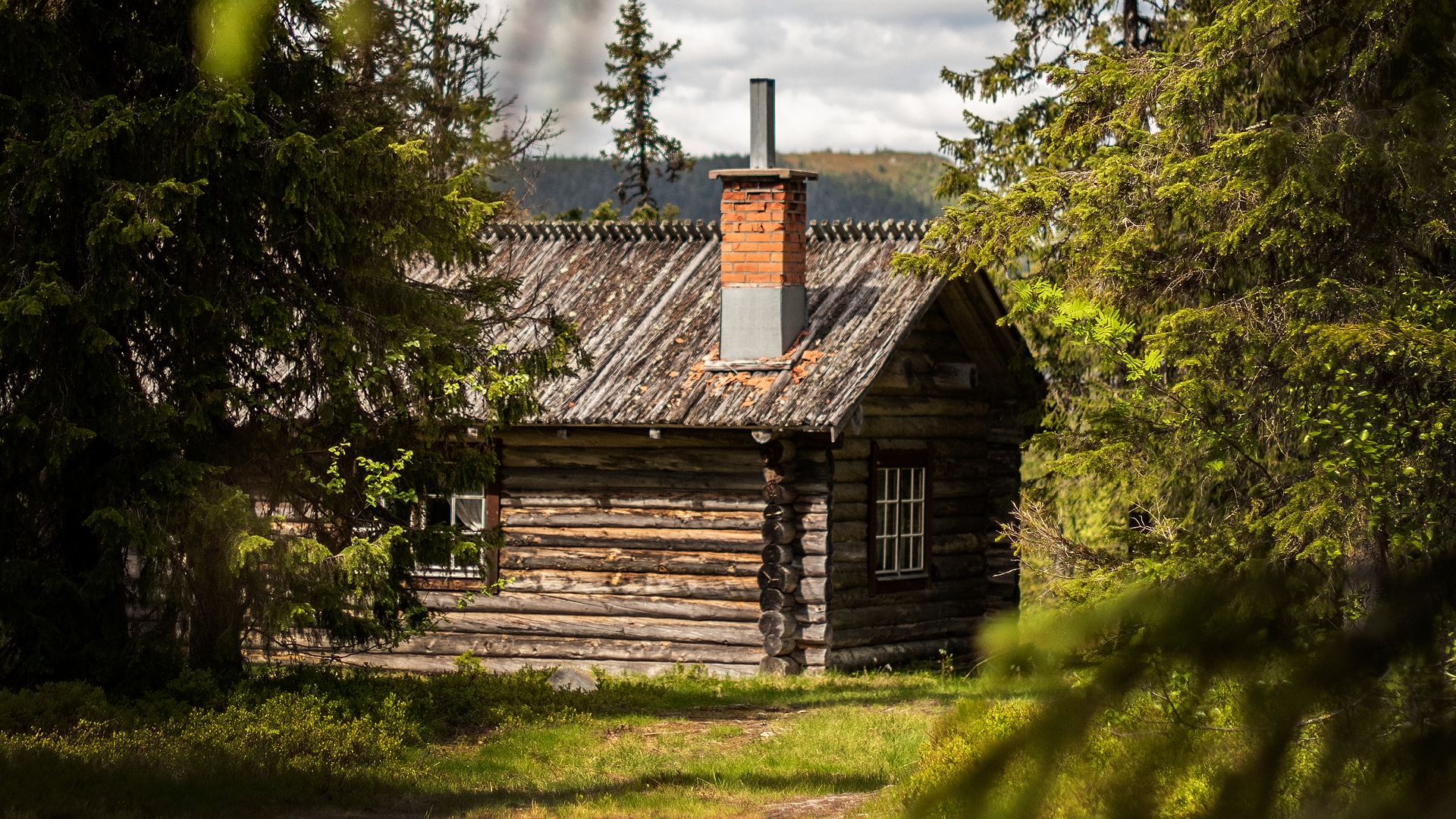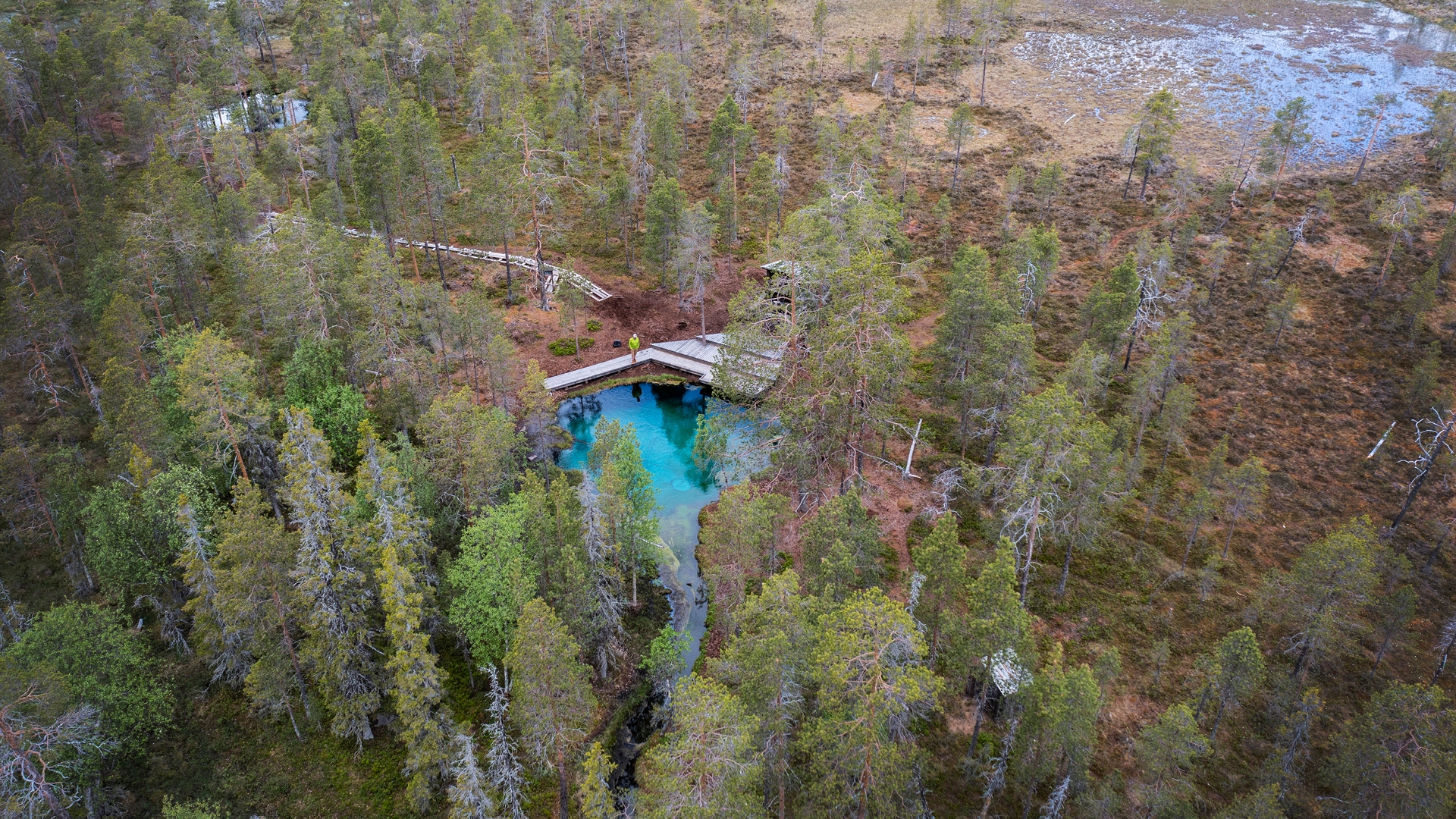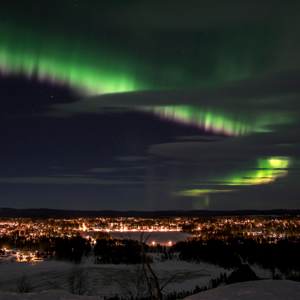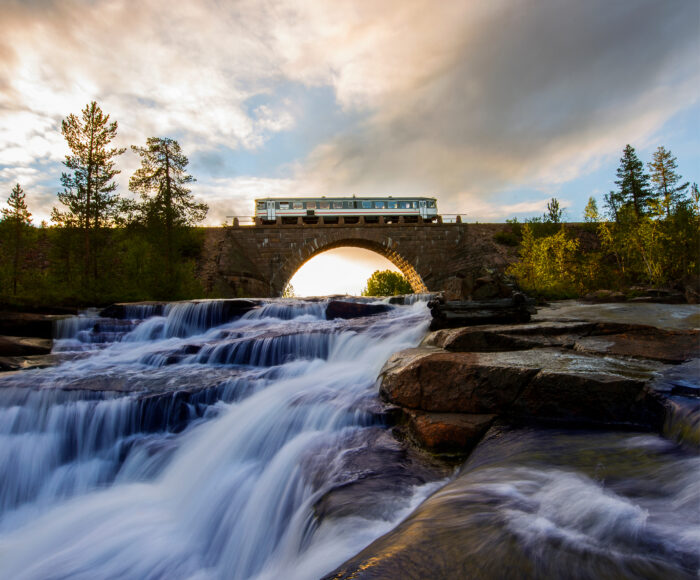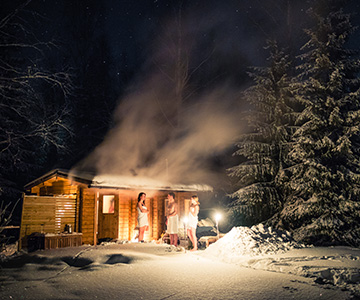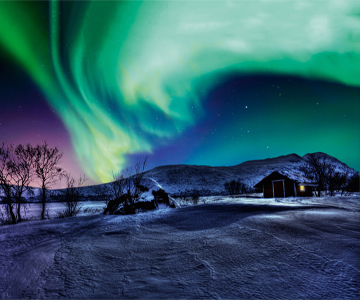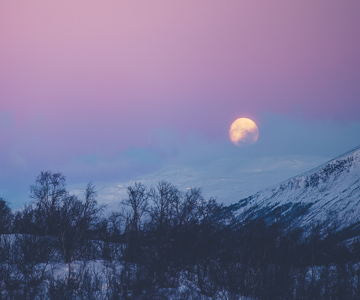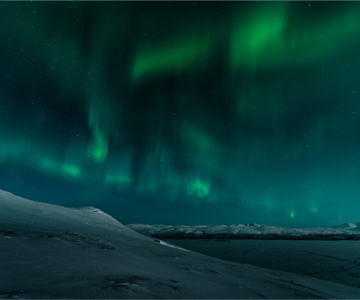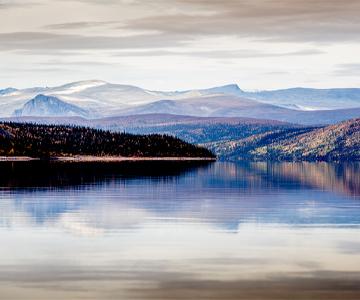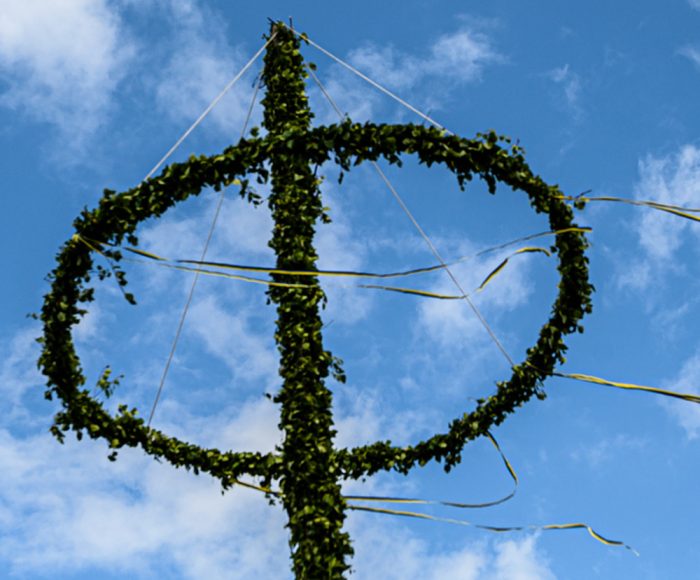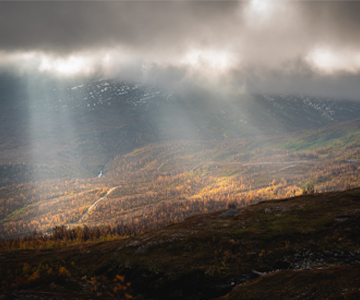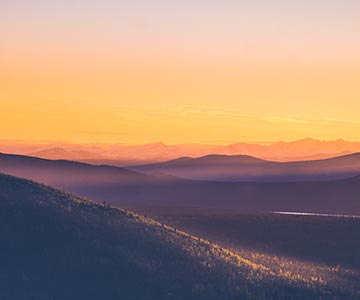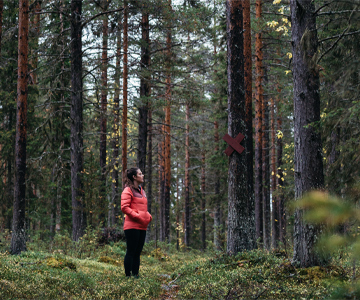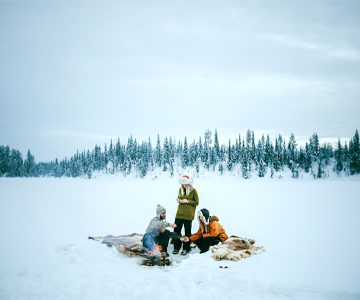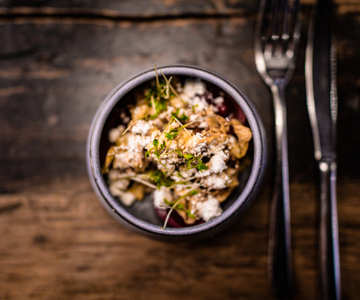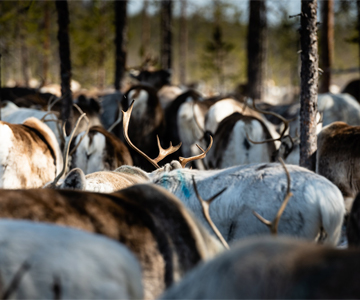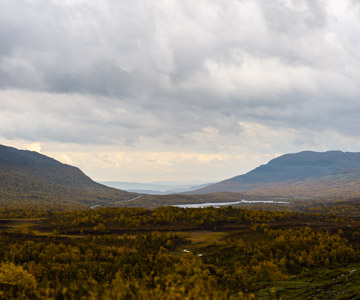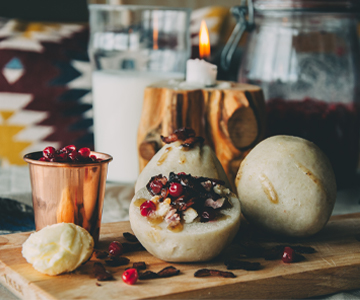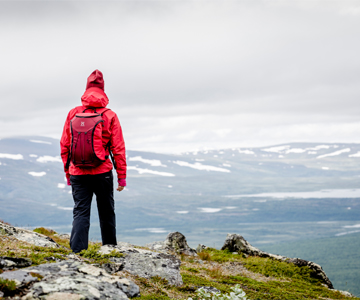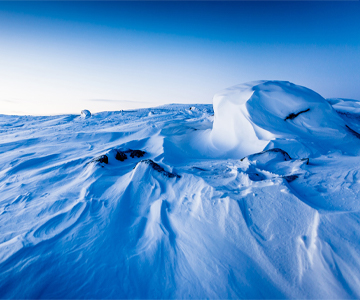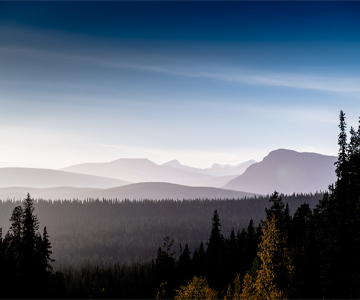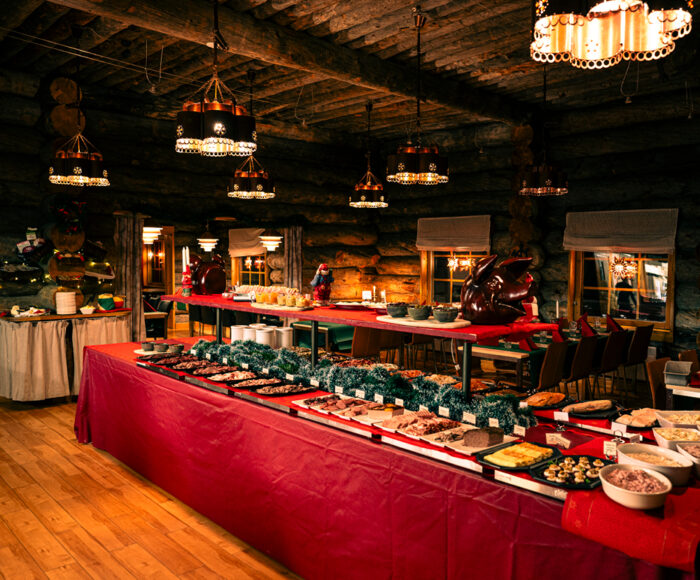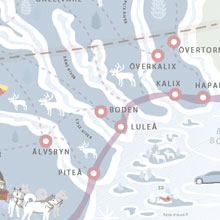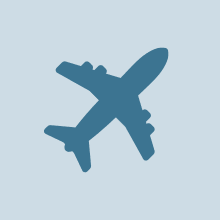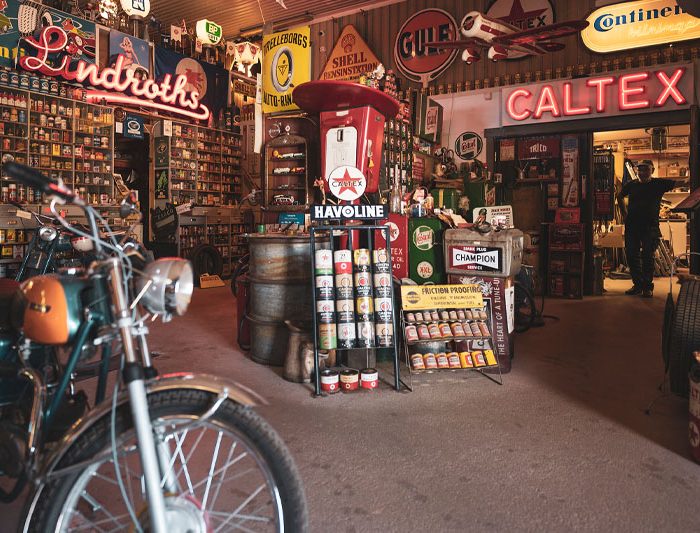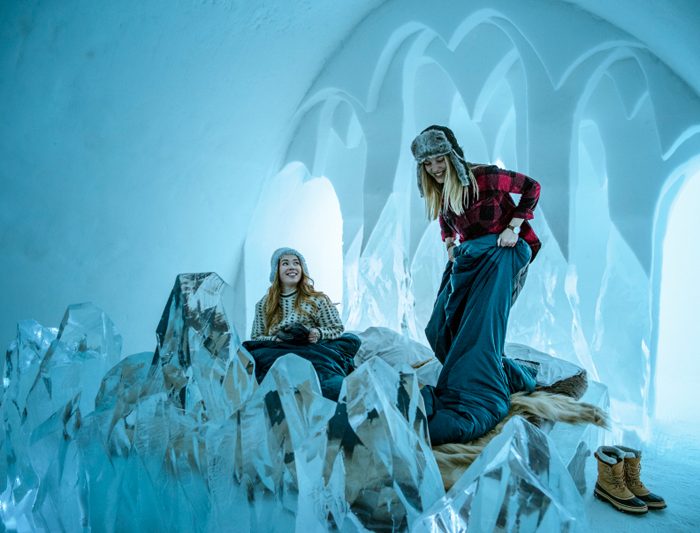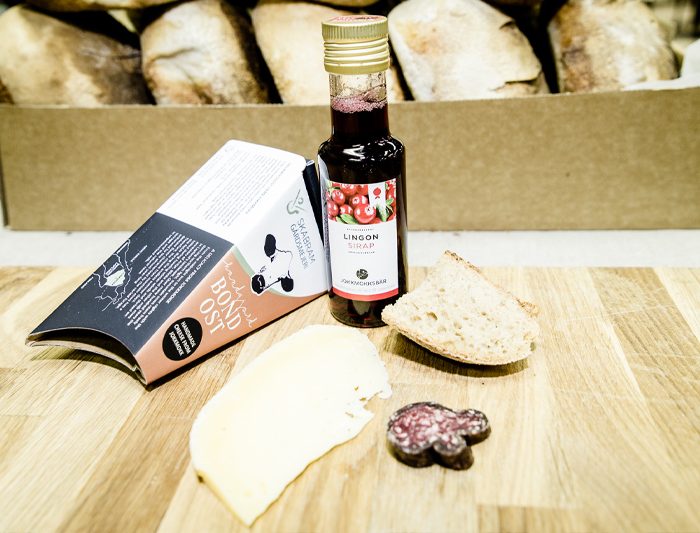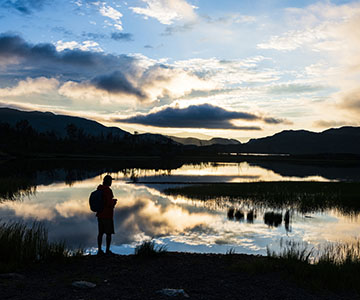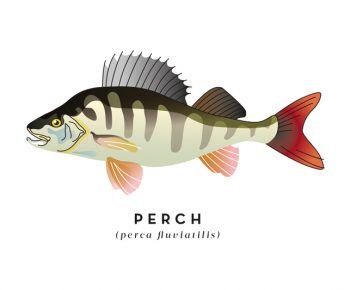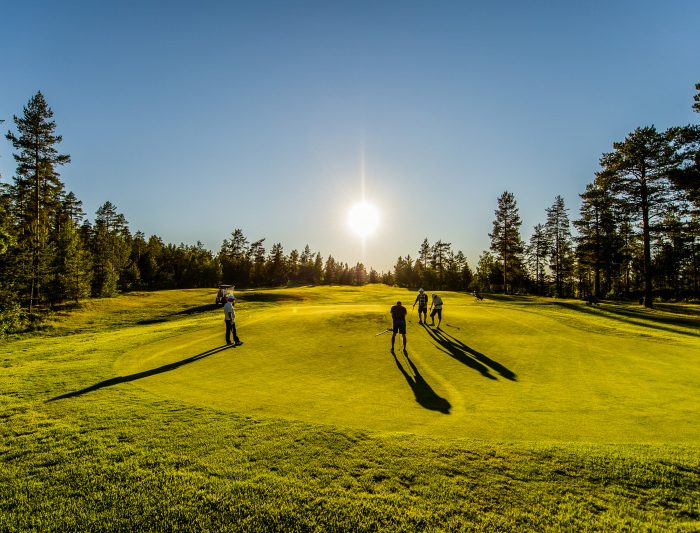On an afternoon in July, Inlandsbanan – the Inland Line – rolls into Arvidsjaur. This is an area known for its military and cultural history. In winter, the town fills up with car testers and winter lovers, which means it’s never far to the next restaurant or pub. You have 24 hours to do something exciting. So: what to do in Arvidsjaur, now that you’re here?
Afternoon: After checking in at Hotel Laponia you wash down the travel dust in the Lobby Bar. There’s something familiar and special about this hotel; it’s like you recognise it somehow. For a while you’re convinced it’s one of Ralph Erskine’s creations – he has, after all, designed many exciting buildings in Sweden, but after googling it, it turns out the Danish architect Ole Helweg is the creator. Helweg is best known for designing Gyllene Ratten, one of Sweden’s first motels, and somewhere you read that he also worked with Erskine. You have time for a visit to the comfortable pool and sauna area before the evening begins.
Evening: Alternative 1. You’ve chosen to stay in Arvidsjaur on a Friday afternoon, because you haven’t had enough train adventures yet. This time, it’s a steam train. The steam train is run by the Arvidsjaur Railway Association and departs on certain days, Fridays and Saturdays at 17:15, during summer. The trip goes from Arvidsjaur to Slagnäs, and back. It’s an amazing train adventure where you stop at one of the nicest beaches in Norrbotten. (During the 2022 season, however, there will be no steam engine trips.) Drinks and snacks are served on the train, and once it has turned around in Slagnäs it makes a stop at a fantastic beach that can only be reached on foot, by boat or by steam engine. This is a place for barbecuing sausages and going swimming in the summer night.
Also read
The land of the SámiEvening: Alternative 2. After pool and sauna, you walk to the centre of Arvidsjaur. The main street, Route 95, is what most visitors remember from Arvidsjaur as a town. It features shops, tourist office and restaurants. In fact, Arvidsjaur is one of Sweden’s most “bar-abundant” towns. Even the hamburger joint Sibylla on the main square serves beer. This is due to the number of foreign workers during the winter months, when the municipalities Arvidsjaur, Arjeplog and Sorsele turn into a melting pot for the world’s car testing industry. Direct flights crowded with test drivers and engineers from mainland Europe land in Arvidsjaur several days a week. Instead of dinner at the hotel – reindeer topside did sound tempting – in Laponia’s restaurant hut down by lake Nyborgstjärn, you choose a pizza from the wood-fired oven at Teckan. Not the best view, admittedly, but a pizza from Teckan is a safe bet.
About Arvidsjaur
Arvidsjaur is a beautiful small town of 4,500 people in the middle of Swedish Lapland with direct connections to several German airports in winter. Arvidsjaur hosts world-class snowmobiling, driving on ice and cross country skiing, as well as Sweden’s best arctic char fishing. With an abundance of great nature activities and hiking in summer. This charming town is just the right place to relax and be yourself.
Have a chat with the local tourist information for more insights. visitarvidsjaur.se
Curious about living in Arvidsjaur?
Check out info for new residents. flyttatillarvidsjaur.se
Morning: You wake up alert. Before breakfast you have time to run a couple of kilometres along Hälsans Stig (The Health Trail) past lake Tvättjärn where Camp Gielas is located, and then on to Nyborgstjärn where there’s an outdoor gym by the beach, just next to Laponia’s hut. If you think that’s too easy, you can cut across and use the trails that begin at the sports area called Rymmarstadion and enjoy the view from Lillberget mountain. Then there’s breakfast waiting, before you walk any further.
Also read
The hiking guideDaytime: Lappstaden behind the OK petrol station – with Starbucks – was under threat once. Politicians and the Transport Administration wanted to build a road straight through this church town. Luckily, Karin Stenberg understood that resistance was needed and today some 30 Sami huts and some 50 sheds are preserved at this heritage site. The Sami Karin Stenberg is someone you’ll meet a bit later today, in the form of a painting at the open-air museum café. She was a fascinating woman who not only saved the church town in Arvidsjaur, but she was also involved in the creation of Same Ätnam – which today is the basis for the Sami crafts foundation Sámi Duodji – the Sami education centre, the foundation Samefolket and Ájtte, the Swedish Mountain and Sami Museum. Then you arrive at the open-air museum Hembygsgården.
This was, in fact, where the town Arvidsjaur was first located. Town relocation is a well-known phenomenon in Norrbotten: Luleå moved already back in the 17th century and these days Kiruna and Gällivare are both in the middle of a move. The old Arvidsjaur moved too, in the beginning of the 20th century. Luckily, the open-air museum Hembygsgården with all its coffee and cakes and local products for sale is still here on site. Several walks begin in this area too, for example a history hike and a trip around lake Prästtjärn with its flora and fauna, rich bird life and even a Swedish sport-fishing record for brook trout.
Packing up: Once you’re back on the Inland Line you realise that with a rental car, or your own car, you would have been able to visit places such as the breath-taking forest pool Grodkällan, mountains Vittjåkk and Akkanålke, or perhaps even Jan-Svensamössan. Perhaps it would have been worth it to check out the Hat and Toy Museum in Glommersträsk, or the folklore museum Hängengården in the same village.
But as it is, you make yourself comfortable. Soon there’s a stop at the Navvy Museum in the village Moskosel, and after that, the train will cross the rapids Hundforsen, part of the rapids known as Trollforsarna. Unless the train meets a car, of course. It’s one of the few combi bridges still in use in Sweden.














